Craftsmanship in Heritage: People, Artifacts, and Daily Life Intangible Cultural Heritage (ICH) Documentation Library / Local Documentation Library-Beijing Library
09 March 2025
Introduction
Located on the southeast side of the first floor of the Beijing Library, the ICH Documentation Library / Local Documentation Library officially opened on 22 June 2024. As the first comprehensive ICH reading space in China, it serves as a professional platform for ICH practitioners, experts, scholars, and enthusiasts to engage in exchange and research, providing readers with all-encompassing services combining reading, exhibition, and interactive experiences in one cohesive space.
This article explores the library’s diverse offerings from collections, thematic exhibitions, and experiential activities that cater to readers’ multifaceted cultural needs, thereby attracting a broader audience and enhancing its impact in the promotion and development of ICH.
A Distinctive Collection of Cultural Resources
Featuring “ICH Documentation” and “Beijing Local Documentation,” the library houses a collection of 20,000 volumes, and 156 seats for readers. The ICH resources span all areas, levels, regions, and ethnic groups of China’s intangible cultural heritage and are categorised into sections such as ICH Theory, ICH Overview, Ten Compilations, and Projects and Practitioners, representing a wealth of cultural insights.
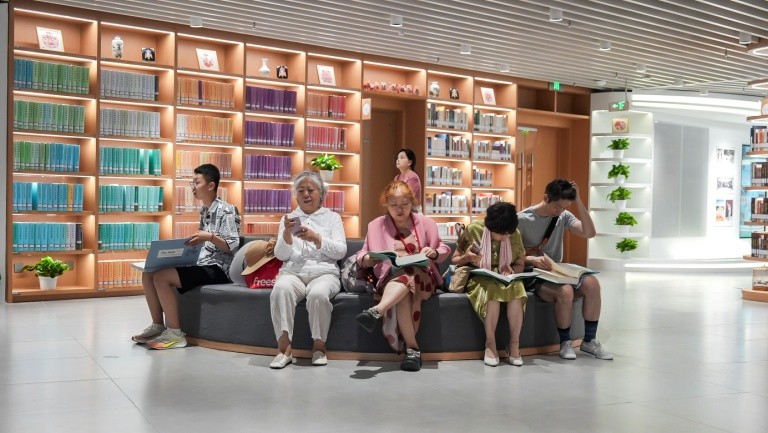
The Beijing Local Documentation section includes open-shelf and semi-open-shelf collections that reflect themes like Four Cultures, One Axis, Three Belts, and the City of Two Olympics. Additionally, a special reading area focused on the Beijing-Tianjin-Hebei Coordinated Development offers a dedicated space for accessing related policies and information. There is also a special collection zone that displays rare materials, including rubbings, ancient books, and historical photographs.
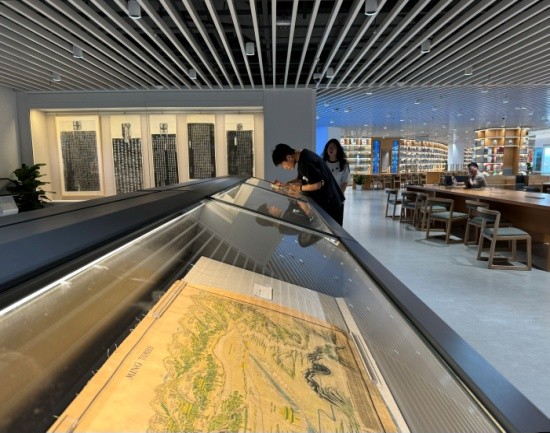
Bringing Heritage to Life with Technology and Themed Exhibitions
In the spirit of modern cultural services, the ICH Documentation Library / Local Documentation Library has not only offered a unique literature reading experience but also embraced innovative and immersive exhibitions. With flexible use of cutting-edge multimedia technologies, these exhibitions aim to synergize digital innovation with the rich historical and cultural tapestry of Beijing, including its intangible cultural heritage.
The museum showcases Beijing’s local literature through a harmonious blend of offline thematic displays and immersive digital interactive exhibitions. Launched on 30 May 2024, the “Axis Through Prints – An Exhibition of Rare Artworks and Classics from the Capital Library of China Collection” at the library took visitors on a visual journey through Beijing’s historic central axis. This exhibition featured 198 Chinese and Western print artworks alongside 25 rare texts, presenting four unique perspectives on the axis — its scenery, charm, art, and notable figures. This exhibition attracted nearly 50,000 visitors by its close on 4 August 2024, supporting the city’s World Heritage bid while showcasing the Capital library of China’s influence in promoting Beijing’s cultural legacy and enhancing the understanding of the remarkable urban design as “a masterpiece of China’s ideal city order.”
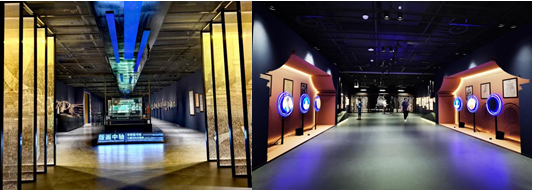
Furthermore, the museum has undertaken the intellectual processing of Beijing’s local literature, particularly through the innovative “Yandu Imprint” Digital Interactive Exhibition. By leveraging state-of-the-art digital technologies, this exhibition presented more than 3,000 years of Beijing’s city-building history and over 870 years of its status as the capital, all within an expansive, multi-dimensional electronic interactive display. Drawing from a database of local literature of over 20 million words, “Yandu Imprint” reconfigures Beijing’s history into seven distinct periods, highlighting critical elements such as hydrology, urban development, climatic changes, and historical evolution. The main screen of the exhibition digitally reconstructs key ancient architectural landmarks, while the auxiliary screens showcase a virtual model of Beijing and a video illustrating the city’s evolving water systems. This dynamic, multi-layered presentation, enhanced by digital technologies, offers a rich, immersive experience that brings Beijing’s material heritage, historical transformations, and cultural traditions to life.
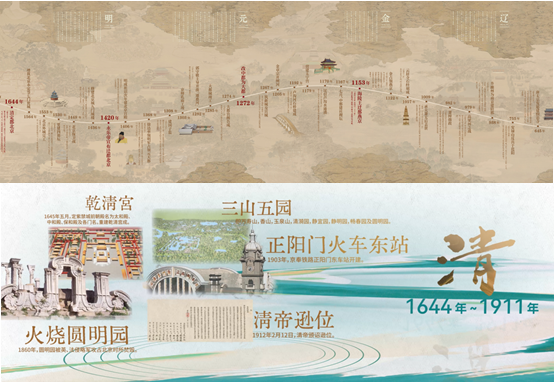
In supporting the preservation and awareness of intangible cultural heritage, the library also uses digital visualisation and interactive technology to create lively, engaging experiences for visitors. For example, the recent “Heritage Reviving – Beijing-Tianjin-Hebei Intangible Cultural Heritage Exhibition” commemorated the 10th anniversaries of both the Beijing-Tianjin-Hebei Coordinated Development Strategy and the Grand Canal’s World Heritage designation. Centered on the canal, the exhibition showcased intangible heritage from Beijing, Tianjin, and Hebei through storytelling, art forms, traditional medicine, martial arts, and craftsmanship.
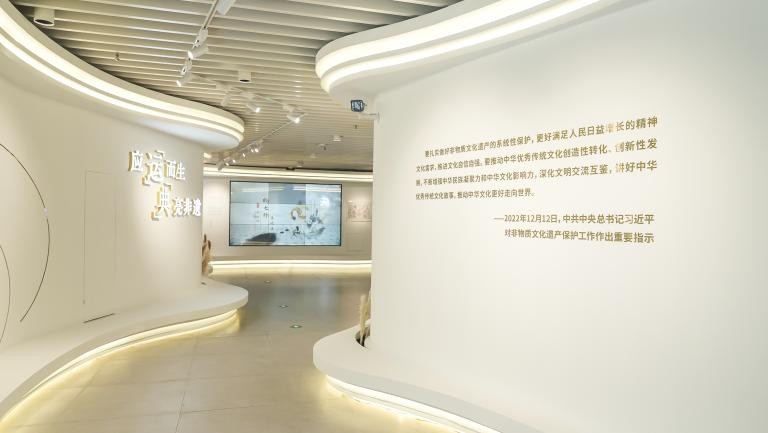
Modern technology brought the exhibits to life, with features like AI-powered Tai Chi challenges, historical playbills, and displays of cultural festivals—offering a vivid portrayal of the deep historical connections between the regions.

Close Encounters with Heritage: An Interactive Experience
The library’s commitment to bringing heritage closer to the public is evident in its “Heritage Up Close” programme, which offers a wide range of hands-on activities. Through workshops, lectures, and demonstrations, readers can experience cultural traditions up close, led by heritage practitioners, experts, and scholars. From celebrating the Lantern Festival with shadow puppetry to making traditional pinwheels, each event revives the meaning of heritage in today’s world. Unique crafts like Beijing dough figurines, Tianjin clay figurines, Yangliuqing woodblock prints, and the Erdos’s indigenous handicrafts are brought directly to readers, allowing them to gain insights into the skill and artistry behind each piece. Highlights include the “Eight Great Beijing Arts,” with stunning demonstrations of filigree inlay, lacquer carving, and the vibrant glow of Beijing embroidery. These events offer diverse, immersive experiences that invite readers to explore heritage in fresh, engaging ways — carefully crafted to bring the spirit of intangible cultural heritage collections to life. As of October 2024, the programme had hosted 54 sessions, welcoming over 2,500 attendees.

The ICH Documentation Library / Local Documentation Library creates a rich cultural environment where heritage is not only preserved but experienced. Here, readers can engage with Beijing’s local culture and intangible heritage in ways that are readable, viewable, enjoyable, and interactive. Through exhibitions, workshops, and live demonstrations, visitors can see the dedication and evolving artistry of heritage bearers, witness old artifacts come alive with renewed meaning, and connect with the enduring stories of life across generations. In this space, heritage is seen, felt, and lived.
Contributed by Capital Library of China